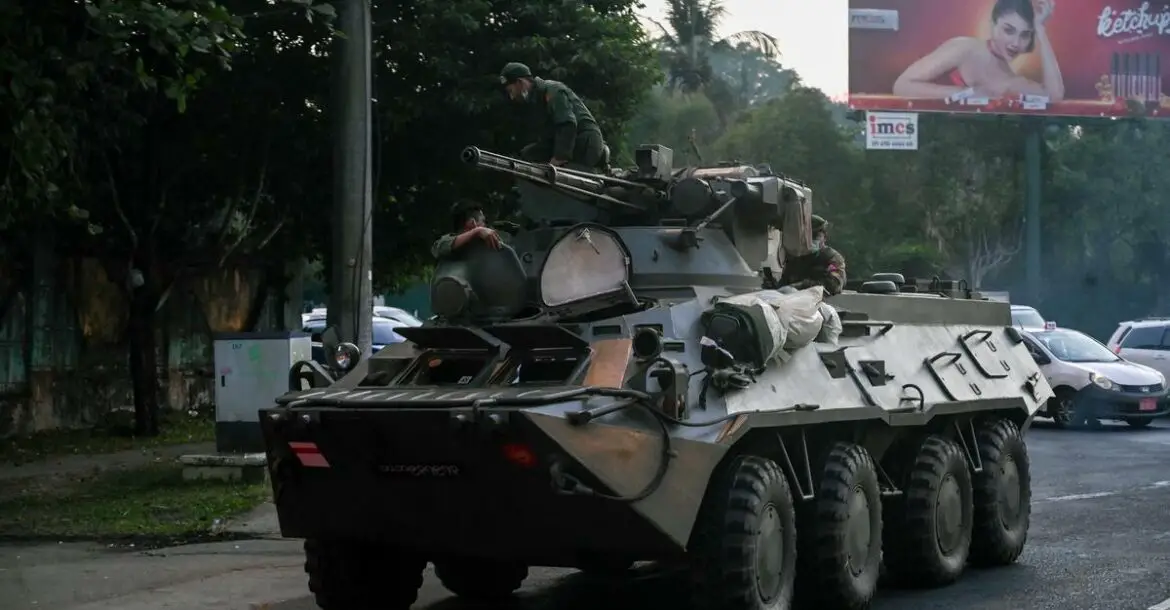© picture alliance / dpa
If you see a man wearing nail polish, he might be sending all manner of message, from a socially conscious one to a statement about his own masculinity. It's a trend that's growing.
Berlin (dpa) - Gianni Versace made it clear years ago: The men wearing nail varnish are "nice and witty."
It was 1994 and Versace was explaining the business of fashion to a journalist after being asked who was walking around like 'that.' 'That' referred to male models on the Milan catwalk, clad in miniskirts over their trousers, embellished with bright red lips and sporting nail varnish.
Thirty years later, it's not every young man who is painting his nails. But some are. And they are often "nice and witty."
Designer Marc Jacobs said a few years ago that nail polish was the perfect finish for men who sought to achieve the perfect look.
Some may think it silly to cover their nails with chemicals - while others say it is super sexy. Take Portugal football star Cristiano Ronaldo, known for painting his toenails.
American rapper Lil Yachty has gone a step further, launching a nail polish line for men. However, the Negatives 001 man-icures collection is initially only available in shades of concrete grey, matte white and matte black.
"I always thought painted fingernails were beautiful," German actor Lars Eidinger told dpa. "It's the level of exaltation I allow myself, so to speak." He says putting on nail varnish is not a statement and does not indicate he wishes he was a woman.
When it comes to choosing a colour, Eidinger says he usually opts for blue or black, with a classic red occasionally to shake things up.
A look at the world of celebrities reveals further fans beyond Eidinger and Lil Yachty, from glam rocker Damiano David of the Italian band Maneskin, winner of the Eurovision Song Contest, to queer rapper Lil Nas X, British pop singer Harry Styles, US actor Ansel Elgort and Brooklyn Beckham, oldest son of the football star David.
Meanwhile Instagram offers thousands of posts under hashtags such as #guynails or #malepolishedtoes.
Of course, there have been male celebrities in the past who wore varnish - think of David Bowie, Kurt Cobain, Mick Jagger, Keith Richards, Johnny Depp and Aerosmith singer Steven Tyler. But their use was generally considered a quirk.
"Right now, we see that male influencers have become more enthusiastic about decorative cosmetics," says Birgit Huber, who works for a German consumer products association. More and more often, actors show up to red carpet events with their nails done, she says.
Nail polish has also brightened up the Polished Man Challenge, a social media campaign seeking to raise awareness about sexual violence against children. On average one in five minors is a victim of sexual violence. To heighten awareness, participants paint one of their five fingernails. Chris Hemsworth, his brother Liam, Zac Efron and Shawn Mendes have all joined in.
Surveys show people are noticing, says Huber. Men tell pollsters they see make-up and nail polish becoming increasingly trendy on Instagram. But that does not mean they will take to the nail polish themselves. Yes, they have seen it, but no, they would not feel confident using it, is a frequent response, she says.
But for young boys who like the look of nail polish and may feel like trying it, few receive a positive response and instead are bullied or told off. Occasionally, though, fathers put on some nail polish out of solidarity with their sons.
Overall, men wearing nail polish has its own distinct meaning, different to when women paint their nails, say observers.
"Nail polish is a way for men to signal flexibility and openness to social change without seriously challenging the standards of masculinity on the street," says male fashion expert Marco Nikolaj Rechenberg.
Nail polish for men comes from the mostly straight punk, rock, grunge and skater worlds, rather than drag queen culture, says Rechenberg.
"The motivation is not the suggestion of queerness or gender-bending, but, on the contrary, rather the emphasis of one's own heterosexuality or masculinity by breaking the rules, which is perceived as courageous," he says.
Wearing nail varnish is a good way to do this, as it is a relatively low risk product, he says.
Using nail varnish seems less feminine than other cosmetics, as it does not emphasize a feature in the way that lipstick and eye shadow do, says Rechenberg.
Historically, nail polish has been less about attractiveness and more about social status, with wearers showing off the fact that they do not have to work with their hands.
"Nail varnish is completely artificial," Rechenberg points out. "People have red lips by nature, but not shiny nails."
















